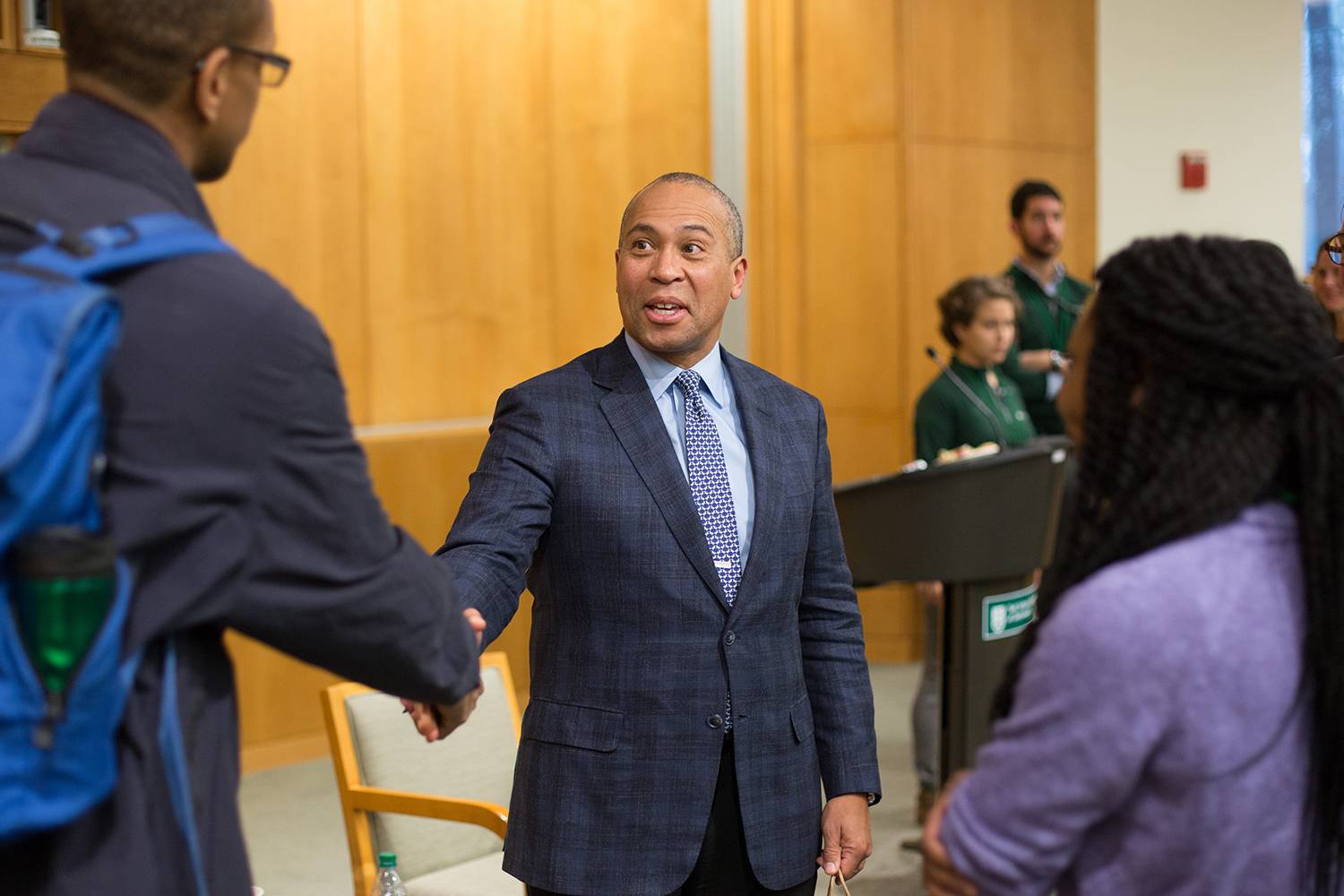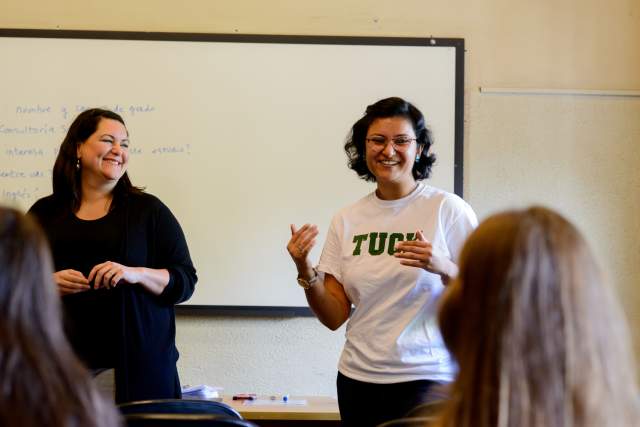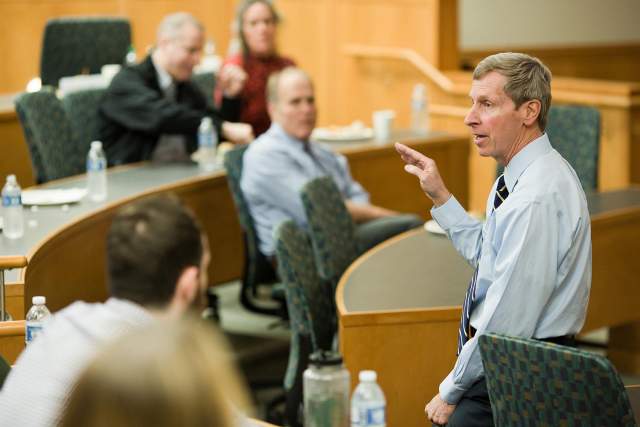In Business or Government, Students Find Good Leadership Looks the Same
Two Tuck students completed an independent study on leadership in the private and public sectors, interviewing 12 high-level leaders along the way.

Through interviews with leaders such as Deval Patrick, students compiled a list of five leadership traits to predict success.
In his popular Tuck elective course The CEO Experience, former New Hampshire Governor John Lynch asks students to think deeply about the similarities and differences between executives in business and government.
They study the turnaround of American Express and Gillette, and also President Kennedy’s handling of the Bay of Pigs, and New York City Mayor Rudolph Giuliani’s leadership in the aftermath of 9/11. And they study how Lynch himself, as a CEO, righted the furniture company Knoll before moving into the public sector. “It’s interesting,” Lynch says, “because contrary to conventional wisdom, we learn that leadership qualities in the public and private sectors are pretty much the same.”
It’s interesting because contrary to conventional wisdom, we learn that leadership qualities in the public and private sectors are pretty much the same.
When Lynch wanted to hear more perspectives on this phenomenon, he turned to Tuck students Siobhan Galligan T’18 and Hope Stege T’18. They took his CEO Experience course last year, and this year worked with Lynch on a case study called “Mixing Business and Politics: What it takes to lead across sectors.” Through interviews with a dozen leaders with private and public sector experience—such as Deval Patrick, John Hickenlooper, Tim Geithner, Gina Raimondo, and Evan Bayh—the students compiled a list of five leadership traits that predict success in both environments.
Galligan and Stege found that good leaders:
- Create a vision for where they want to go, and work to mobilize people around it.
- Build strong teams and leverage them.
- Build and maintain strong relationships through transparency, communication, and trust.
- Have a strong moral compass and use principles to guide their actions.
- Plan for problems and take the blame when they arise.
The journey to this deeper understanding started for Galligan and Stege when they enrolled in Lynch’s course last year. Both saw the course as a chance to learn practical leadership lessons from someone who has been tested, and succeeded, in multiple contexts. “For me, there was this sense of—here’s someone who has figured out how to balance the motivational aspects and the strategic elements,” Galligan says, “and also do so in a way that’s very team oriented and focused on the long term.”
Lynch’s course is offered at an opportune time for MBA students—after they have completed the core courses and learned the vocabulary and components of business. For Stege, the CEO Experience is more “about the ‘how’—how you’re dealing with people, how you’re stepping in on day one and thinking about your role in an organization,” she says. “It’s not just about ideas anymore, it’s about putting them into action. Having that implementation piece really helped round out a lot of my thinking.”
It’s not just about ideas anymore, it’s about putting them into action.
For the independent study, Lynch worked with Galligan and Stege to produce a list of leaders with the kind of experience that could be instructive. He made introductions to most of them, while the students reached out on their own to others. Galligan and Stege were pleasantly surprised by how easy it was to schedule a meeting. “They were so excited to talk to us,” Galligan said, “and I think that speaks highly of Tuck. The school gave us the time and resources—and credit—to study a topic that top leaders are thinking about a lot these days.”
What they gleaned was stories about moments when the leaders felt challenged by their circumstances, and how those challenges inform their thinking about leadership. Deval Patrick, for example, talked about his experience leading a task force at Texaco that implemented a settlement of a race discrimination class action lawsuit, and how, as governor of Massachusetts, he managed the overwhelming offers for help after the Boston Marathon bombing. “These types of stories really helped us get at what drives people in these roles,” Stege said.
“Siobhan and Hope showed tremendous initiative and learned quite a bit,” Lynch says. “I think they produced a white paper that really adds to the intellectual capital on understanding leaders in business and government.”

